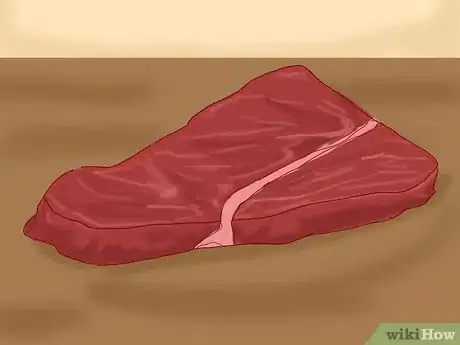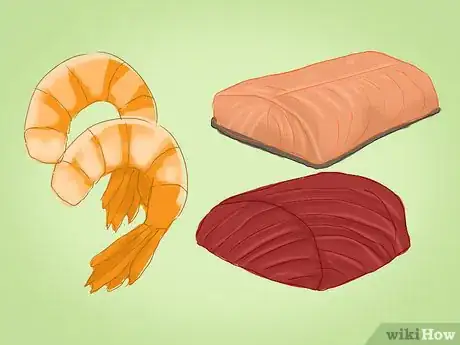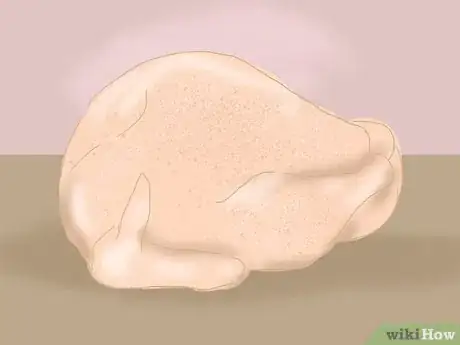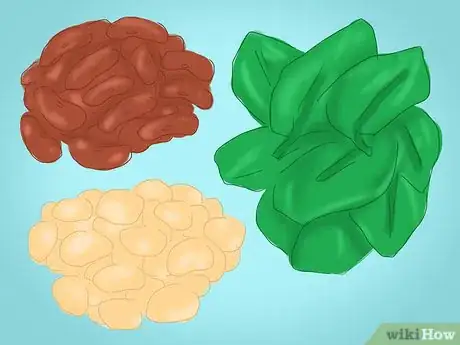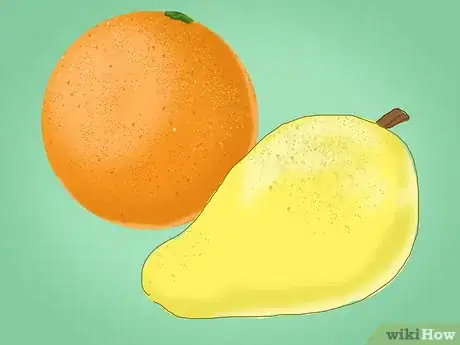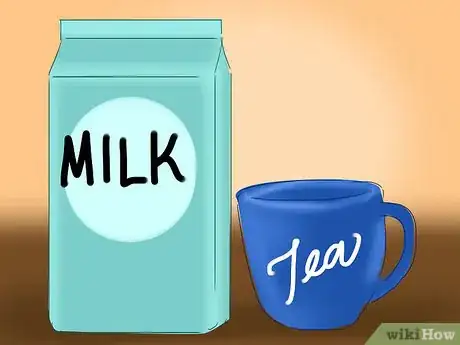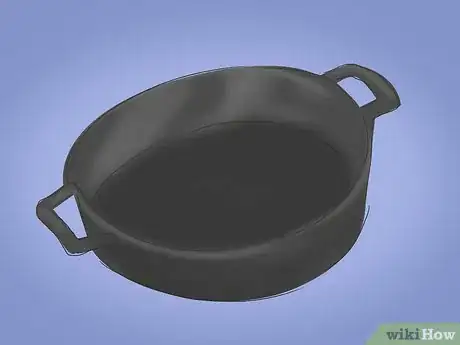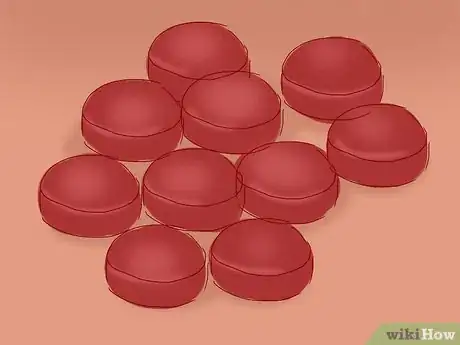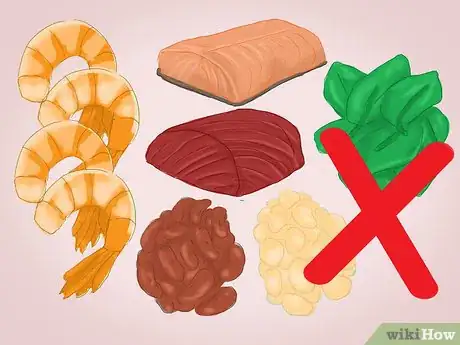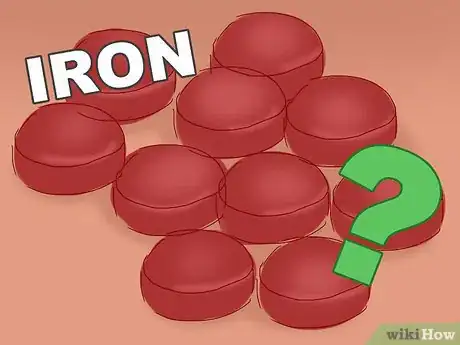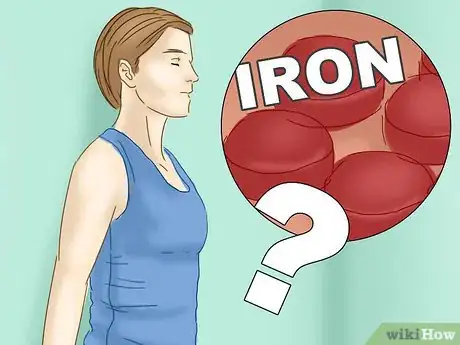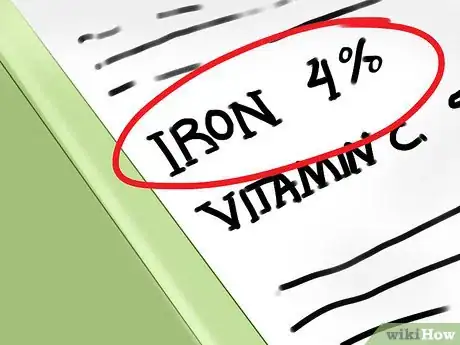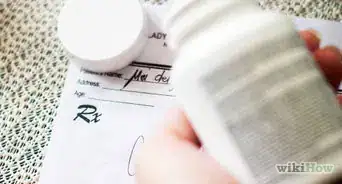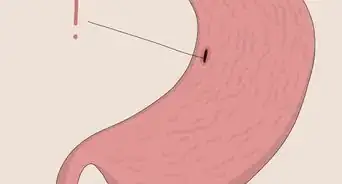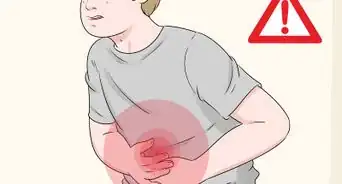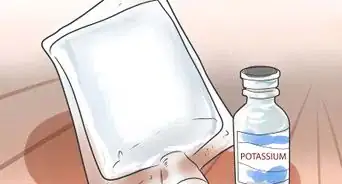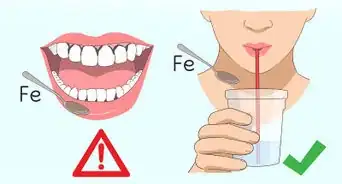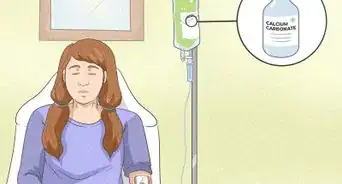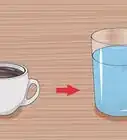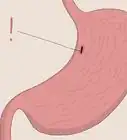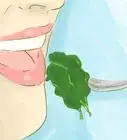This article was co-authored by Claudia Carberry, RD, MS. Claudia Carberry is a Registered Dietitian specializing in kidney transplants and counseling patients for weight loss at the University of Arkansas for Medical Sciences. She is a member of the Arkansas Academy of Nutrition and Dietetics. Claudia received her MS in Nutrition from the University of Tennessee Knoxville in 2010.
This article has been viewed 115,056 times.
Iron is one of the most common and important nutrients in our bodies, where it acts to store and transport oxygen in red blood cells, among other roles. Iron is essential to the creation of new cells, neurotransmitters, amino acids, and hormones. Iron deficiency is a common problem and may be indicated by chronic drowsiness, apathy, and feeling faint and/or cold. If you are not consuming sufficient iron on a daily basis, there are plenty of easy ways to increase your iron intake for a healthier body and lifestyle.
Steps
Choosing Iron-Rich Foods
-
1Eat lean red meat. Red meat is the largest known food source of easily-absorbed iron content. Organ meats in particular, such as liver, are especially high in iron. Don’t worry, vegetarians, you have many options, which will be discussed later.
- Iron in meat is known as heme iron, which comes from the hemoglobin in the animal tissue. It is more easily absorbed when eaten than plant-derived sources of iron, at about a 30% rate of absorption.[1]
- There is no iron in fat, so you should have no qualms about choosing extra lean ground beef or trimming the excess fat off your roasts and steaks.
- Iron content examples: beef chuck roast, 3.2 mg per 3 oz.; ground beef, 2.2 mg per 3 oz. For these examples, keep in mind that a male over age 18 should consume 8 mg or iron per day; a non-pregnant female age 19 to 50 should consume 18 mg per day.
-
2Select iron-rich seafood. Generally speaking, seafood is not as substantial a source of iron as red meat. However, particular items like canned clams and cooked oysters are among the most-iron rich foods of any type.
- Shrimp and sardines are also good sources of iron; salmon and tuna have somewhat less, but also offer valuable nutrients like omega-3 fatty acids.
- Iron content examples: canned clams, 23.8 mg per 3 oz.; sardines, 2.5 mg per 3 oz.
Advertisement -
3Mix in pork and poultry. These white meats provide solid amounts of heme iron, although not as much as red meat or higher-iron seafood options.
- Turkey is a good choice, providing more iron than chicken or ham.
- If you enjoy liver or other organ meats (like turkey or chicken giblets), you’re in luck - these can provide substantial amounts of iron.
- Iron content examples: liver / giblets, 5.2 - 9.9 mg per 3 oz.; duck, 2.3 mg per 1/2 cup.
-
4Go for more grains. As non-heme iron sources (not contained in hemoglobin), the iron content in grains (as well as beans, nuts, fruits, vegetables, and so on) is not as well-absorbed when consumed -- usually less than 10% absorption, compared to 30% for heme iron.[2] It still counts toward your overall intake, but it should not make up the entirety of your iron consumption.
- Practically all breads, cereals, and anything else made from grains offers iron content. However, iron-fortified breads and breakfast cereals are the best choice if added iron consumption is your goal
- Iron content examples: fortified dry cereals, 1.8 - 21.1 mg per 1 oz; fortified instant hot cereal, 4.9 - 8.1 mg per packet.
-
5Choose vegetarian options. Even if you do consume meat, picking up iron from non-meat sources like beans, nuts, and vegetables can only help, and will offer a host of other healthy vitamins, minerals, and nutrients.
- Proteins like soybeans, lentils, kidney beans and chickpeas are solid sources of non-heme iron. So go ahead and pick the tofu burger if you aren’t a meat-eater.
- Dark, leafy greens like spinach and kale, dried fruits like apricots, prunes, and figs, nuts and seeds such as peanuts and pumpkin seeds, potatoes and rice, and brewer’s yeast and molasses are among the many sources or iron available to vegetarians and omnivores alike.
- Iron content examples: cooked lentils, 3.3 mg per 1/2 cup; cooked spinach, 3.2 mg per 1/2 c.; roasted pumpkin seeds, 4.2 mg per 1 oz.
Enhancing Your Iron Intake
-
1Pair fruits and vegetables high in vitamin C with your iron. Vitamin C boosts the body’s absorption rate of iron, so consuming meals with high amounts of both maximizes the benefits.
- We think of oranges when we think of vitamin C, and citrus fruits are an excellent choice. So too are other tropical fruits like mangoes and guava, and vegetables like peppers, broccoli, and sweet potatoes. The CDC website offers a substantial list of vitamin C-rich foods in its article on iron consumption.
- Especially for vegetarians who are consuming non-heme iron, pairing iron with vitamin C is important. Consider combinations like cereal with strawberries or lentil soup with a tomato salad.
-
2Cut back on absorption inhibitors. While foods rich in vitamin C can help your body take in iron, others can do the opposite.
- Dairy products contain iron, but the calcium in them can lessen the amount your body absorbs. Those taking iron supplements are often told not to consume dairy products when taking the pill, and you may want to consider avoiding dairy at a meal with iron-rich foods for the same reason.[3]
- The polyphenols in coffee and tea, when consumed in significant amounts, can also hinder absorption, so try to not to drink these beverages in excess.
- Egg proteins are another absorption inhibitor to keep in mind, as are foods high in minerals like zinc and phosphorous, which, like calcium, can “compete” for absorption with iron.[4]
-
3Cook in iron pots and pans. Especially when cooking with high heat, a trace amount of iron content may be transferred to your food. This is especially true when cooking acidic foods, such as a tomato sauce.[5]
-
4Use iron supplements if needed. Talk with your healthcare professional about whether iron supplements are right for you. Pregnant women, because of the increased demands on their body and the need for iron by the fetus, are particularly likely to be put on an iron supplement. It may be included in your prenatal vitamin or be a separate supplement.
-
5Don’t overdo it. Generally speaking, you should be far more concerned about not getting enough iron than getting too much. That said, having too much iron collect in the body is a problem.
- Iron overload is called hemochromatosis, and the symptoms are similar to an iron deficiency.
- While it is possible to take in too much iron by over-consuming iron supplements, hemochromatosis is usually a genetic condition.
- Be aware that many iron supplements are higher than the recommended daily allowance (RDA). If you are taking an iron supplement in addition to a multivitamin that contains iron, you risk over-consumption.
- You are very unlikely to take in too much iron through food alone. So don’t try to get out of eating the liver and onions your mother-in-law prepared by saying you think you’re eating too much iron!
Knowing Your Iron Needs
-
1Be aware of its function in your body. Iron is a mineral that is present in every single cell in our bodies, and thus is essential to body function and good health.
- As part of the protein hemoglobin, iron helps carry oxygen throughout our bodies. It is also a key component of enzymes that facilitate digestion and numerous other body functions.
- Basically, iron is everywhere -- and is needed everywhere -- in your body.
-
2Know how much iron you need. The U.S. Recommended Daily Allowance (RDA) of iron varies by gender and age. To access the full chart, go to: https://ods.od.nih.gov/factsheets/Iron-HealthProfessional/. Some highlights include:
- Children between ages 7 months and 8 years need between 7 to 11 milligrams of iron daily, based on age.
- Teens between ages 9 and 18 need between 8 to 15 mg / day, based on age and gender.
- Males age 19 and above need 8 mg daily.
- Females age 19-50 need 18 mg / day, and 8 mg / day after that. Pregnant women need 27 mg / day.
-
3Understand iron deficiency. Iron deficiency is the most common nutritional deficiency and in the U.S. and the primary cause of anemia, which affects organs throughout the body.
- Iron deficiency can cause fatigue and mental impairment in adults, premature birth in fetuses, and motor/mental function development impairment in infants, among other problems.
- Iron deficiency is most common during periods of rapid body growth (infancy or pregnancy, for example) or due to blood loss (such as menstruation or an internal bleeding condition).
-
4Track your iron intake and get tested if concerned. Use the nutritional information on the foods you eat to keep track of the iron you are consuming, and look up the amount you should consume daily based on age and gender as per your RDA.
- If you suspect your iron intake is low, or have symptoms like tiredness or apathy, simple blood tests can determine whether you have an iron deficiency or anemia, a shortage of red blood cells that can be caused by iron deficiency.
- Regular blood testing for iron levels can tell you if your iron supplement is working and help you adjust the dosage to know when you are getting enough.
References
- ↑ http://www.redcrossblood.org/learn-about-blood/health-and-wellness/iron-rich-foods
- ↑ http://www.redcrossblood.org/learn-about-blood/health-and-wellness/iron-rich-foods
- ↑ http://www.parentingscience.com/iron-absorption.html
- ↑ http://www.parentingscience.com/iron-absorption.html
- ↑ http://www.parentingscience.com/iron-absorption.html
About This Article
The easiest way to increase your iron intake is to eat iron-rich foods, like lean red meats and oysters. Iron from meat is the easiest for our bodies to absorb, but there are plenty of other iron-rich foods, like beans, leafy greens, and dried fruits. If you’re getting most of your iron from non-meat sources, though, it’s a good idea to consume plenty of vitamin C, since it helps your body absorb iron. You can get vitamin C from citrus fruits like oranges and lemons, or from vegetables like broccoli. Keep scrolling for a guide to how much iron your body needs per day!
